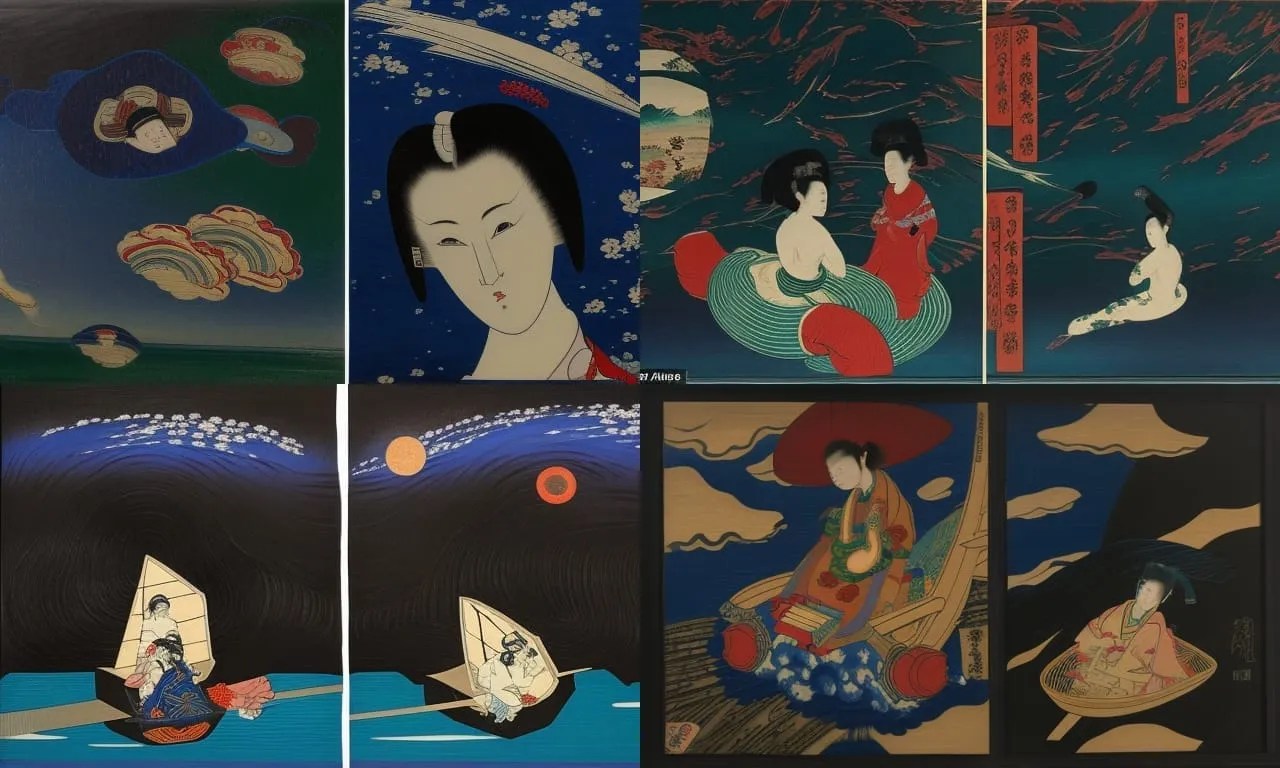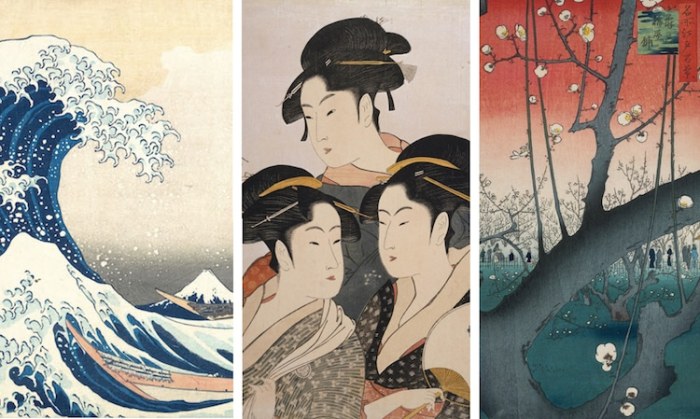Which statement correctly describes japanese ukiyo e woodblock prints – Which statement correctly describes Japanese Ukiyo-e woodblock prints? This question takes center stage as we delve into the captivating world of these exquisite creations. Ukiyo-e, meaning “pictures of the floating world,” emerged as a distinct art form during the Edo period in Japan, capturing the essence of everyday life, landscapes, and cultural traditions with vibrant colors, bold lines, and intricate compositions.
Their influence extends far beyond the shores of Japan, leaving an indelible mark on Western art and popular culture.
Ukiyo-e prints showcased the talents of renowned artists such as Katsushika Hokusai, Utagawa Hiroshige, and Kitagawa Utamaro, who employed innovative techniques to create breathtaking masterpieces. From the iconic “Great Wave off Kanagawa” to the charming depictions of courtesans and kabuki actors, these prints offer a glimpse into the vibrant culture of Edo-era Japan.
Historical Context
Ukiyo-e woodblock prints emerged during the Edo period (1603-1868) in Japan, a time of relative peace and prosperity. The flourishing urban centers, particularly Edo (present-day Tokyo), became hubs for entertainment and popular culture.
The rise of a merchant class with disposable income fueled the demand for affordable art forms. Ukiyo-e prints, with their vibrant colors and accessible subject matter, catered to this growing audience.
Artistic Characteristics
Ukiyo-e prints are characterized by their bold lines, flat colors, and dynamic compositions. Artists employed a technique called “aiban” to create multiple-sheet prints, allowing for larger and more complex designs.
Perspective was often distorted to emphasize certain elements, while shading was used to create a sense of depth. The use of “benizuri-e” (red printing) added a vibrant and distinctive touch to many prints.
Subject Matter

Ukiyo-e prints depicted a wide range of subjects, including:
- Landscapes (“fukei-ga”): Depicting serene scenes of nature, often with Mount Fuji as a prominent feature.
- Actors (“yakusha-e”): Celebrating the popular theater culture of Kabuki and Bunraku.
- Courtesans (“bijin-ga”): Idealized portraits of beautiful women from the pleasure quarters.
- Everyday life (“fuzoku-ga”): Capturing scenes from daily life, including festivals, travel, and leisure activities.
Production Process
Ukiyo-e prints were created through a collaborative process involving:
- Artist: Designed the image and provided the original drawing.
- Carver: Transferred the design onto wooden blocks, one for each color.
- Printer: Applied ink to the blocks and printed the image onto paper.
The process was meticulous and required skilled craftsmen at each stage.
Cultural Impact: Which Statement Correctly Describes Japanese Ukiyo E Woodblock Prints

Ukiyo-e prints had a profound impact on Japanese culture:
- Popularized traditional Japanese art forms and motifs.
- Documented and preserved aspects of Edo period life and customs.
- Influenced later art movements, such as Impressionism and Post-Impressionism.
- Became a valuable source of inspiration for Western artists, including Vincent van Gogh and Edgar Degas.
Notable Artists
Among the most renowned Ukiyo-e artists were:
- Katsushika Hokusai: Known for his iconic “The Great Wave off Kanagawa” and “Thirty-Six Views of Mount Fuji” series.
- Utagawa Hiroshige: Famous for his landscapes and travel prints, including “Fifty-Three Stations of the Tokaido” series.
- Kitagawa Utamaro: Celebrated for his delicate and sensual portraits of courtesans.
Key Questions Answered
What is the main subject matter of Ukiyo-e prints?
Ukiyo-e prints primarily depict scenes from everyday life, including landscapes, actors, courtesans, and cultural events.
Who were some of the most famous Ukiyo-e artists?
Katsushika Hokusai, Utagawa Hiroshige, and Kitagawa Utamaro are among the most renowned Ukiyo-e artists.
What is the significance of Ukiyo-e prints in Japanese culture?
Ukiyo-e prints played a vital role in capturing the essence of Edo-era Japan and its cultural traditions.